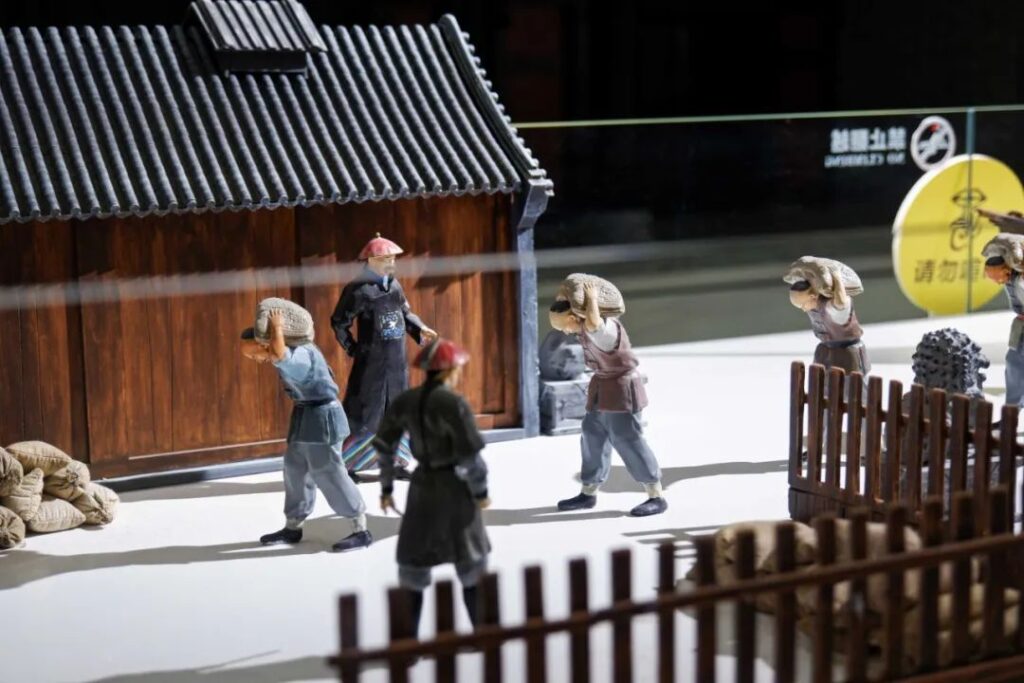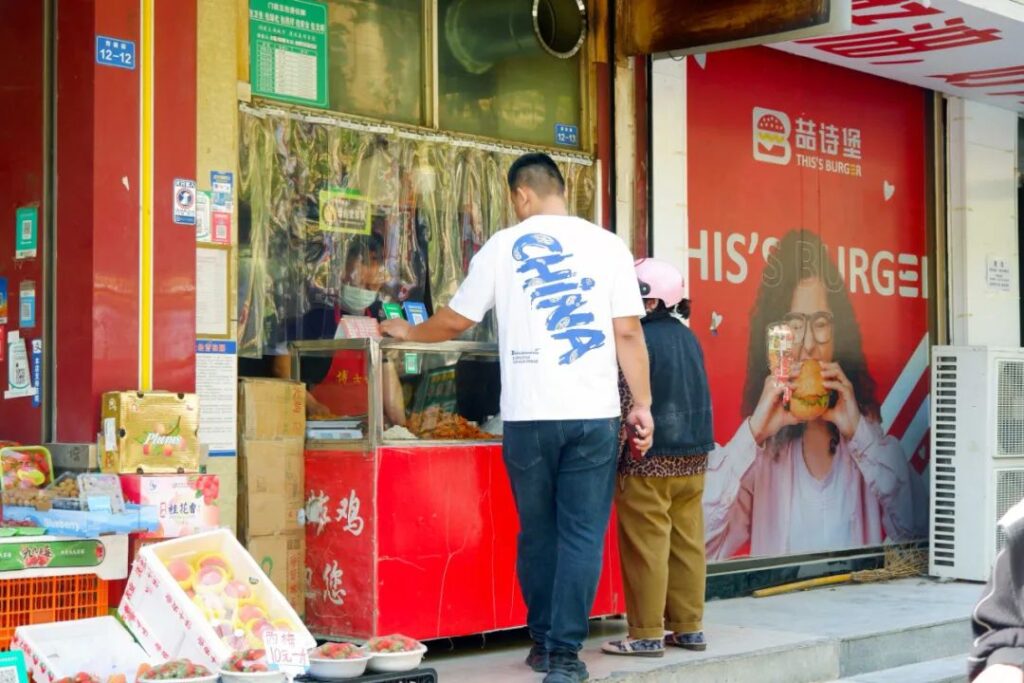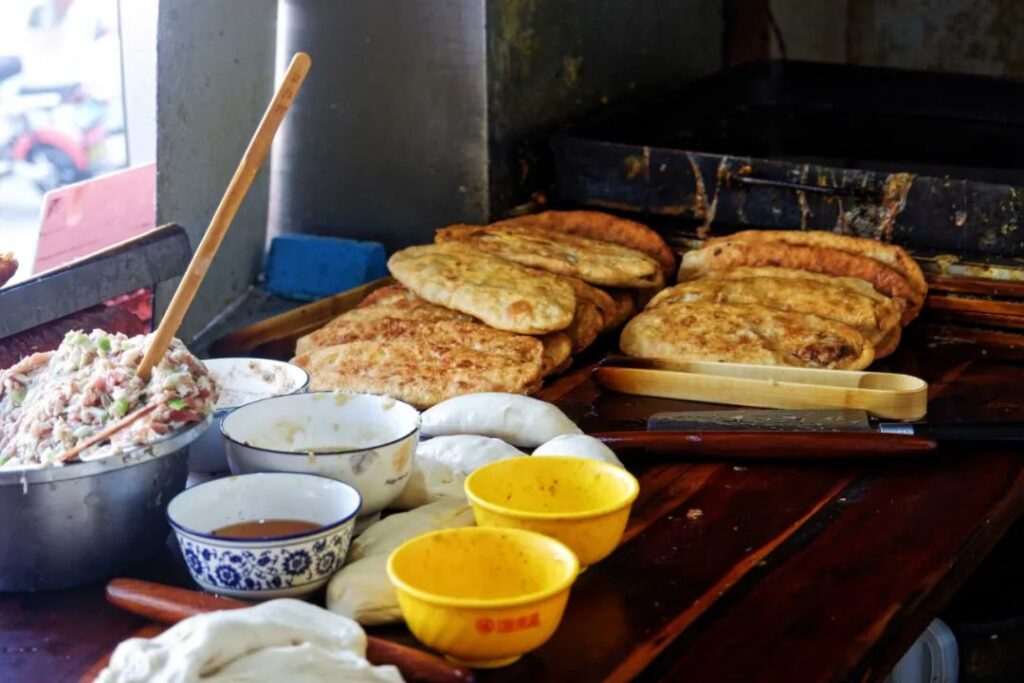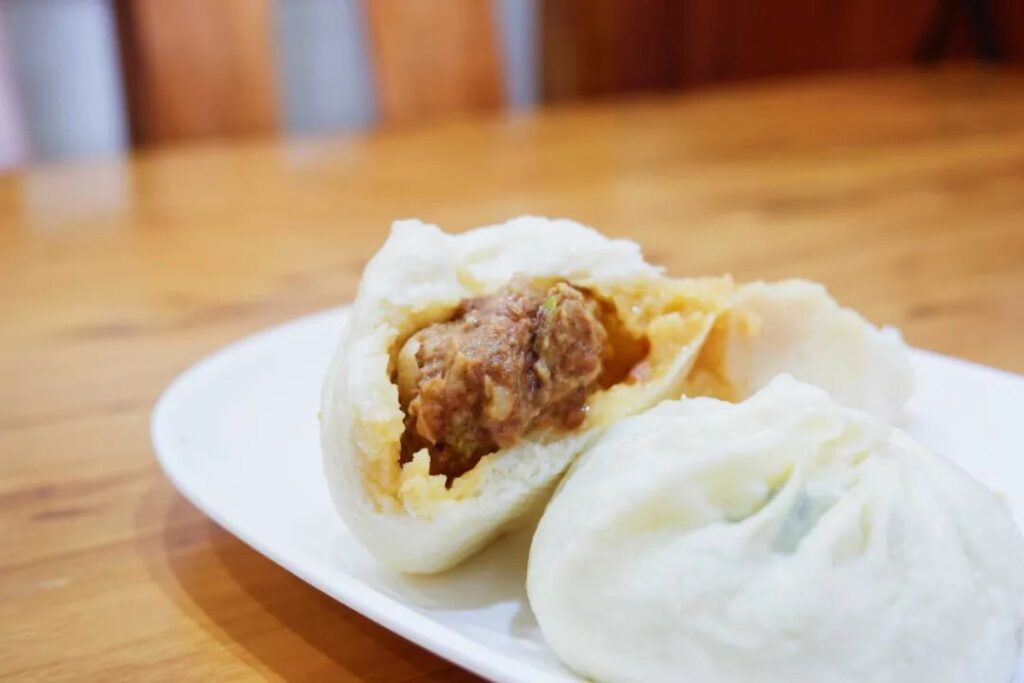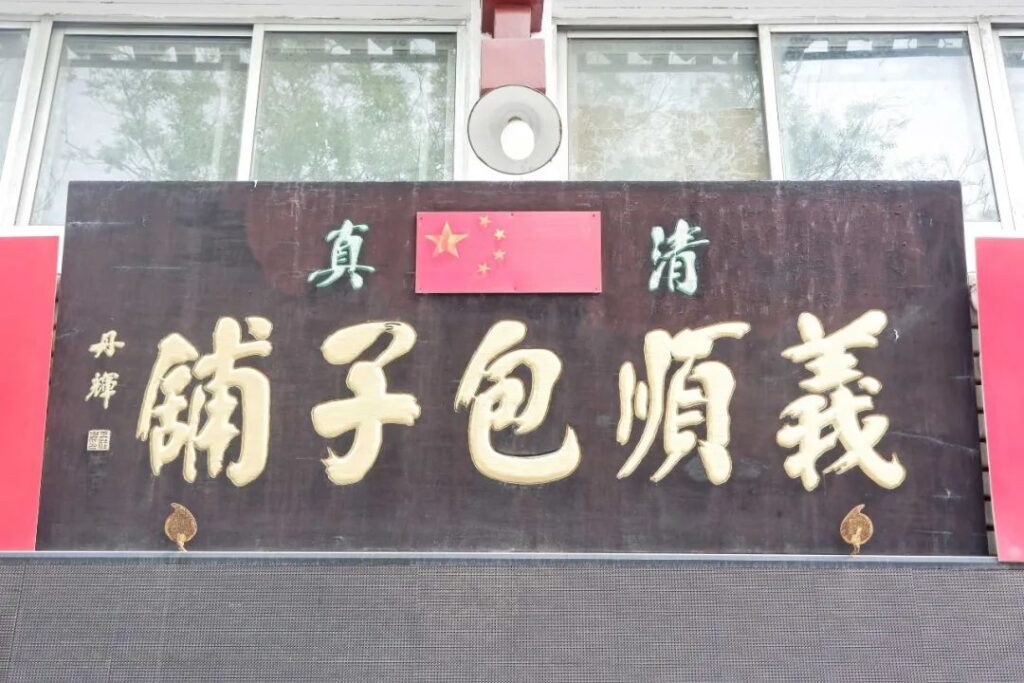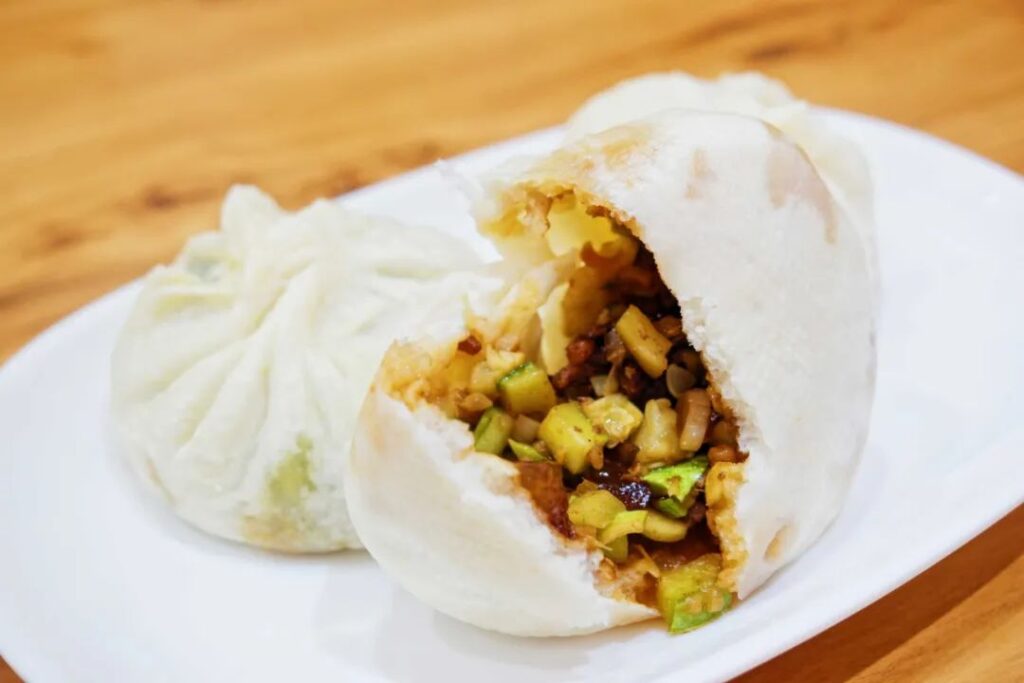A while ago, I visited Linyi in Shandong province. While searching for other interesting cities nearby, I stumbled upon Liaocheng. To be honest, I had already set my sights on this “Water City North of the Yangtze River” a few years ago when “Aerial China Season 3” aired. The feeling of being amazed by the sight of a square-walled city soaked in water from a bird’s eye view still excites me when I think about it now.
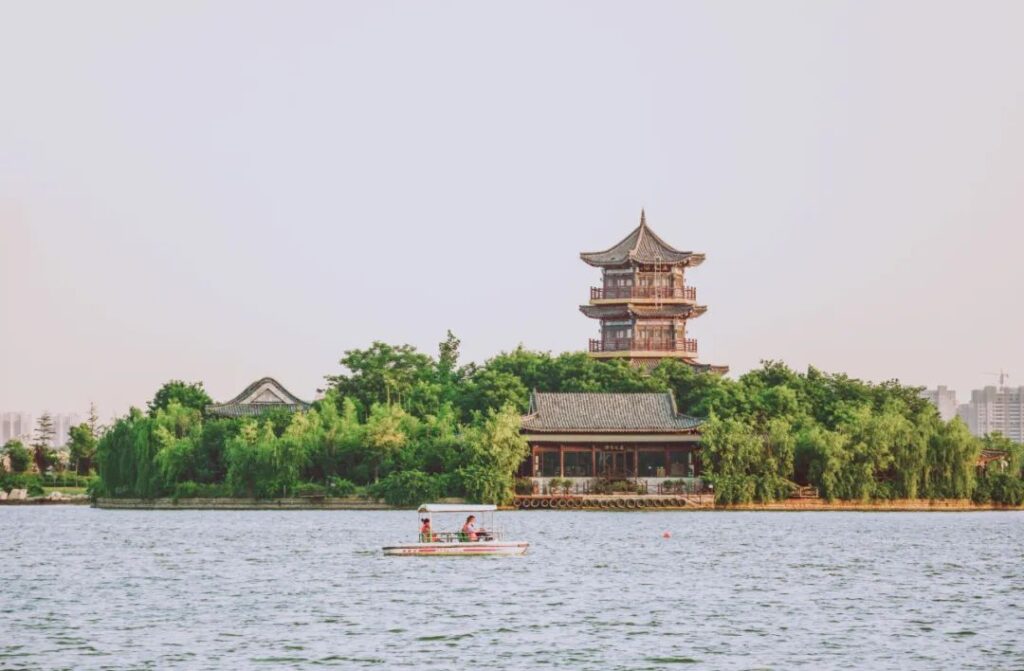
However, at that time, I discovered that the only way to reach Liaocheng was by train, which instantly dampened my enthusiasm. After not paying attention to it for a long time, I was surprised to learn that Liaocheng finally entered the high-speed rail era last December. Without hesitation, I bought a ticket to fulfill my dream.
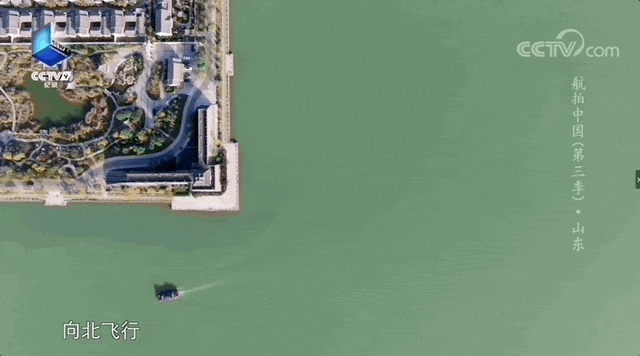
Where is Liaocheng? It is located at the junction of Shandong, Hebei, and Henan provinces. The opening of the Ji-Zheng High-Speed Railway has made it possible to reach Jinan in half an hour, Zhengzhou in an hour and a half, Beijing in two and a half hours, and even Shanghai with a direct ticket.
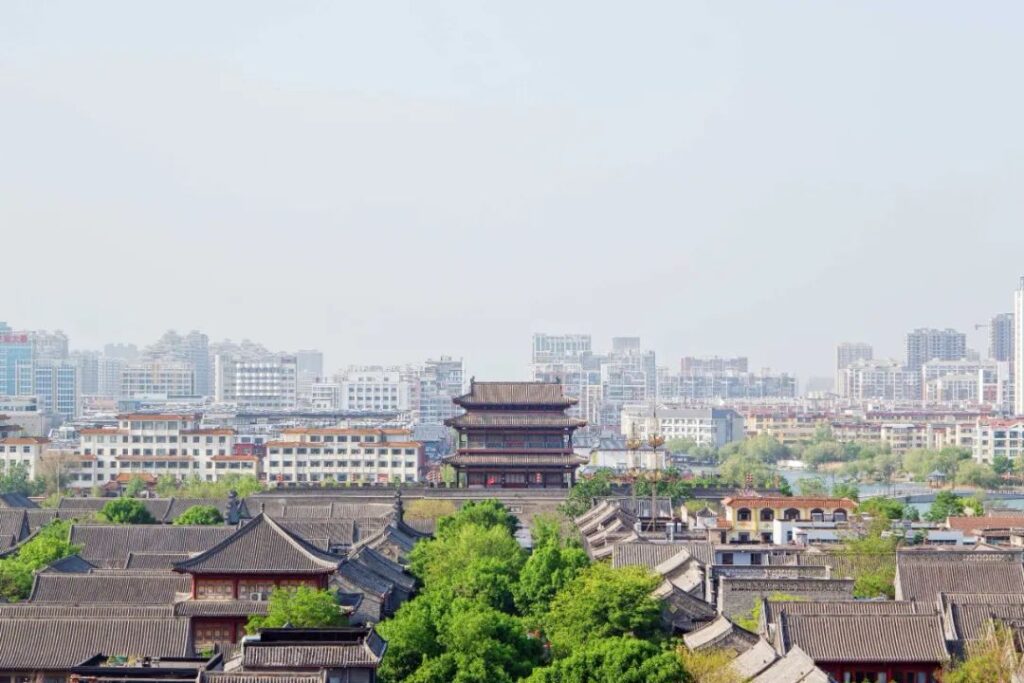
Although Liaocheng may seem a bit desolate now, its ancestors were indeed wealthy. Also known as Dongchang, many stories from books such as “Water Margin,” “Jin Ping Mei,” and “Strange Tales from a Chinese Studio” took place here. The water area, which occupies nearly one-third of the city’s area, gives it a touch of Jiangnan’s gentle charm, while the heroic stories of Jingyang Ridge add a hint of the chivalrous spirit of the jianghu.
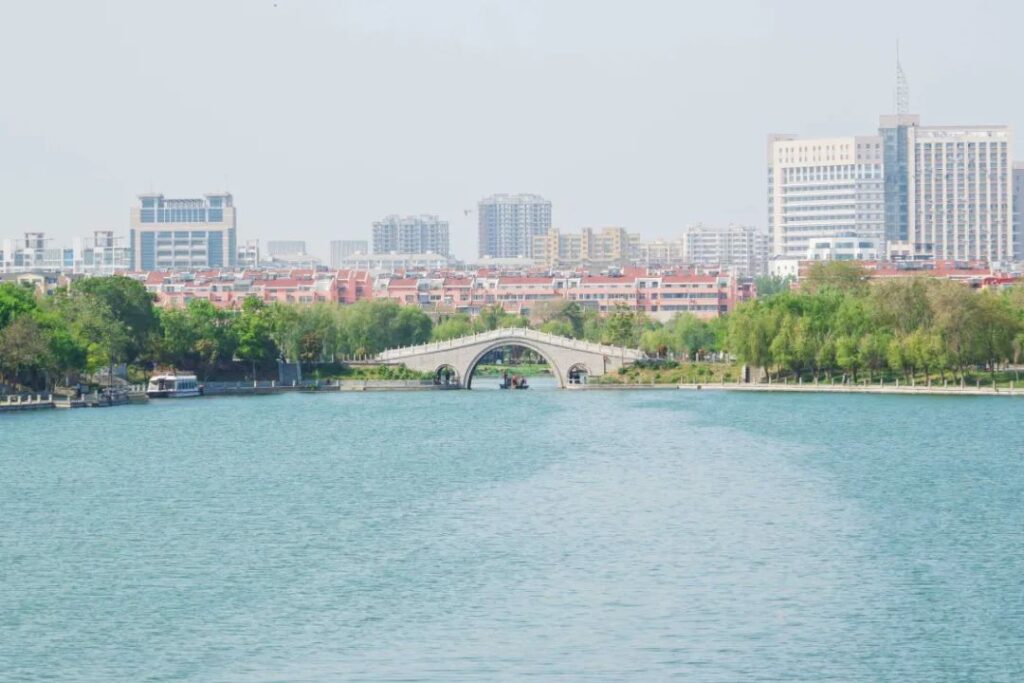
The Beijing-Hangzhou Grand Canal brought four hundred years of prosperity to this place. The Shanshan Guild Hall, which cost 60,000 taels of silver to build, can amaze people with just one beam.
The Guangyue Tower in the center of the ancient city is one of the “Top Ten Famous Towers in China,” alongside the Yellow Crane Tower and the Yueyang Tower.

As for the food, there is no need to say much. The Yellow River farming civilization has given Liaocheng people a keen sense of noodle-making. Merchants from all over the country who came along the Beijing-Hangzhou Grand Canal have allowed the culinary souls of various regions to blend here.
Head to Yuxin Street or Dongguan Street, pick a restaurant, and eat in silence. The best part is that the prices are very attractive.
Most of the attractions in Liaocheng are located in and around the ancient city. Special forces can finish exploring in a day. Of course, you can also slow down your pace like me and experience the slow life of the water city in two days and one night.
Day 1: Arrival – Dongguan Street – Fu Sinian Memorial Hall – Liaocheng Iron Tower – Rice Market Street – Guangyue Tower – Longdi Wharf
Day 2: Yuxin Street – Shanshan Guild Hall – Grand Canal Cultural Museum – Return

Shanshan Guild Hall
⏰ 8:30-17:30, ticket sales stop at 17:00
🎫 ¥30/person
As one of the nine major commercial ports along the river, there were many big merchants coming and going to Dongchang, especially those from Shanxi and Shaanxi. To better stick together, merchants from the two places jointly built this Shanshan Guild Hall.
It took 66 years and cost more than 60,000 taels of silver. Even those who know nothing about ancient architecture can instantly grasp its exquisite luxury.
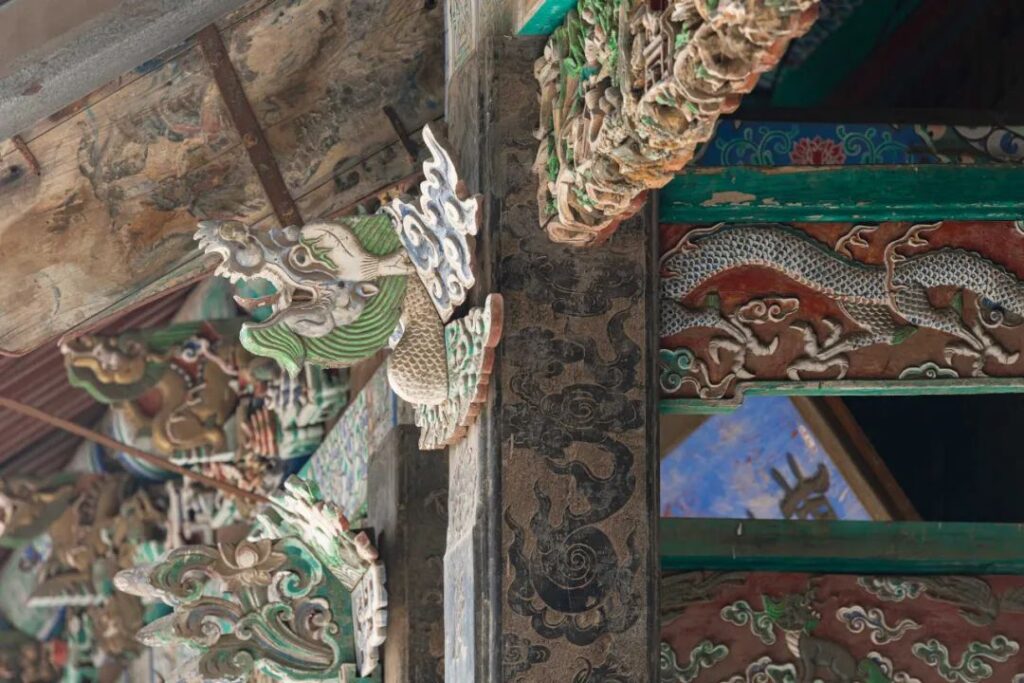
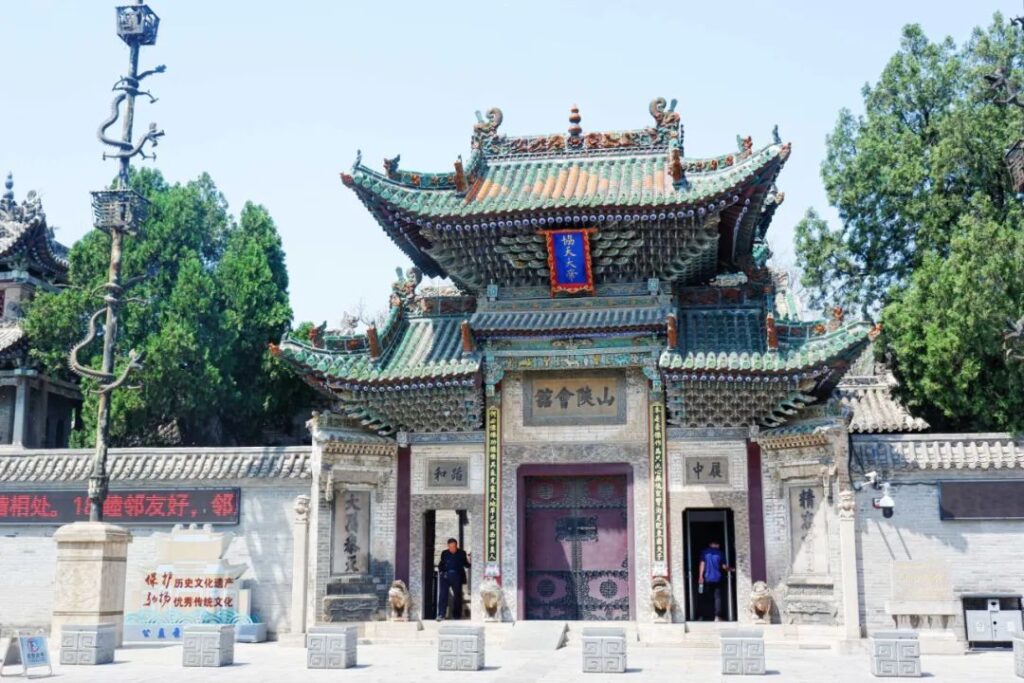
Visiting the Shanshan Guild Hall is truly a neck exercise. From the mountain gate, the six-layer Ruyi brackets supporting the glazed tile roof had me staring in awe for a long time.
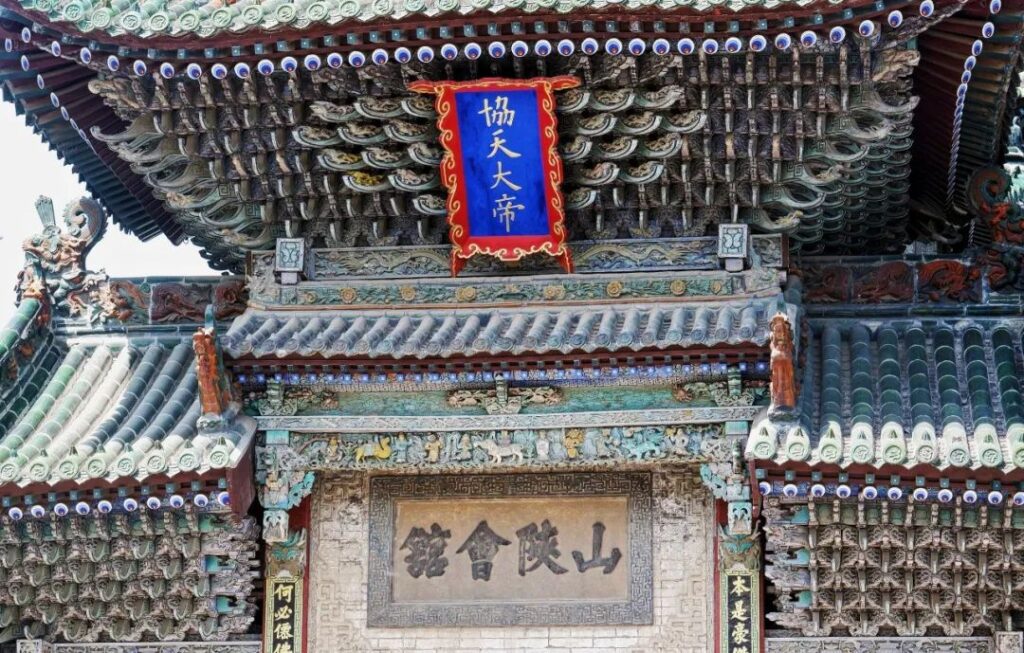
The most easily overlooked treasure is the three openwork carved lintels hanging under the eaves of the main hall. Each one is carved from a single walnut wood log, and any slight mistake would render the entire log useless.
They depict mythical stories such as “Eight Immortals Crossing the Sea” and “Lanke Mountain.” Each character’s expression and posture are unique, and even the chessboard and pieces are clearly visible.
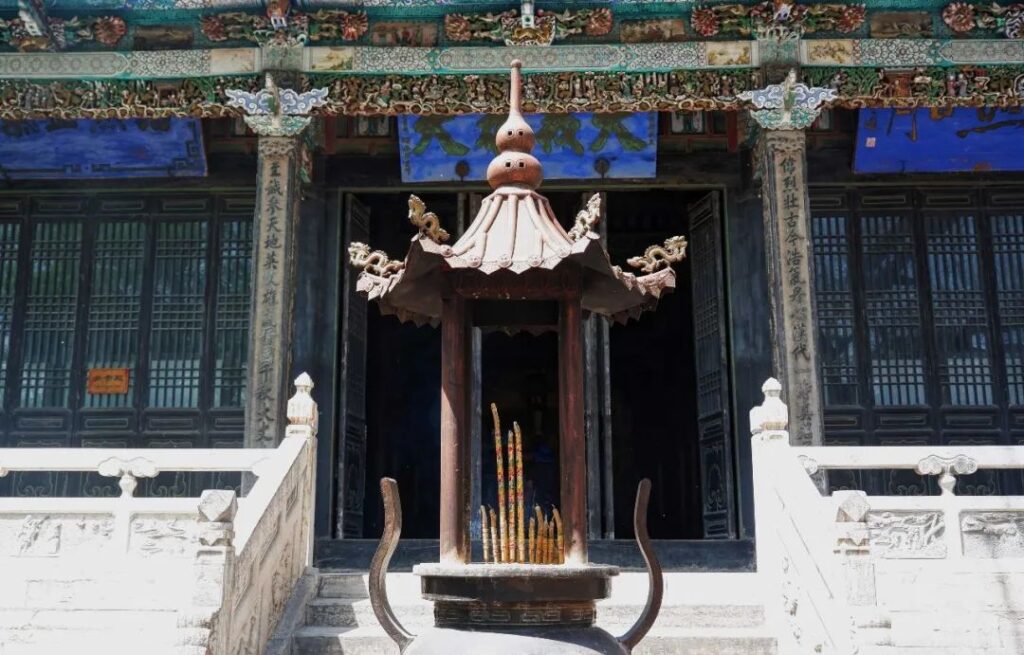

Guangyue Tower
⏰ 8:30-17:30, ticket sales stop at 17:00
🎫 30 yuan/person
Guangyue Tower is located in the center of the ancient city. Although it has been repaired several times, its main structure remains basically unchanged, and most of the building components are from the initial construction. When you walk into the tower and hear the creaking sounds, you can feel its 600 years of history.
The four-story all-wooden structure with a veranda was built without using a single nail, and the exquisite craftsmanship has even given rise to the legend that Lu Ban, the patron saint of craftsmen, helped build Guangyue Tower.

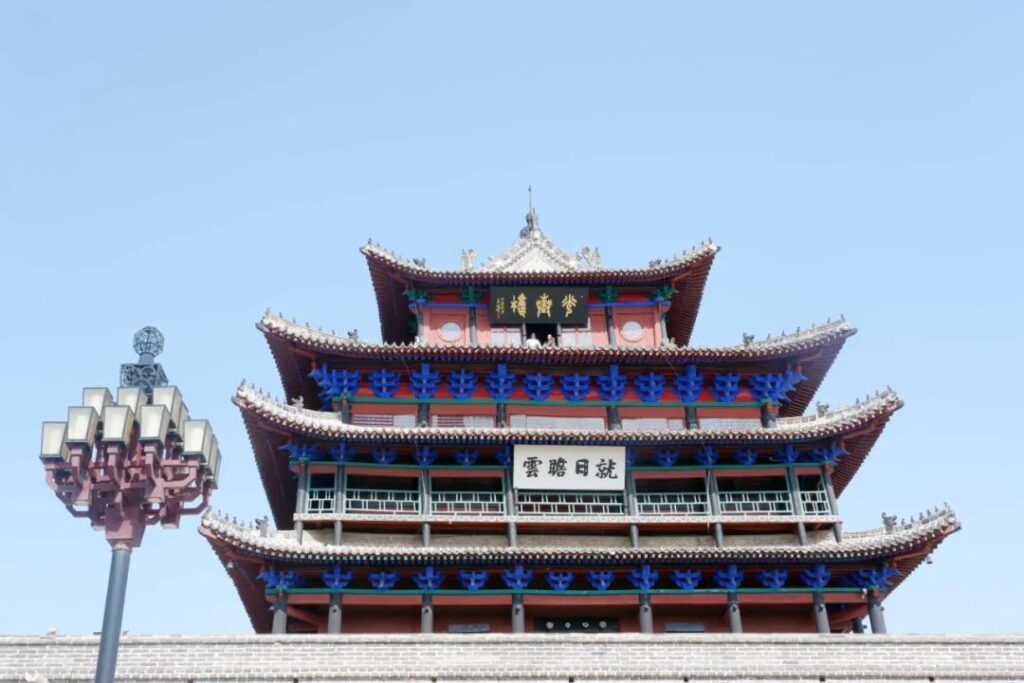
Climbing to the top of the tower, you can overlook the ancient city and gaze into the distance at Dongchang Lake, with four different views from the four windows.
You can not only appreciate the unique charm of the ancient city floating on the water like a chessboard but also feel the sense of time travel as the old buildings in the ancient city and the modern buildings in the distance complement each other.
After seeing it, you can probably understand why Emperor Qianlong of the Qing Dynasty was willing to visit Guangyue Tower six times and even built a temporary palace here.
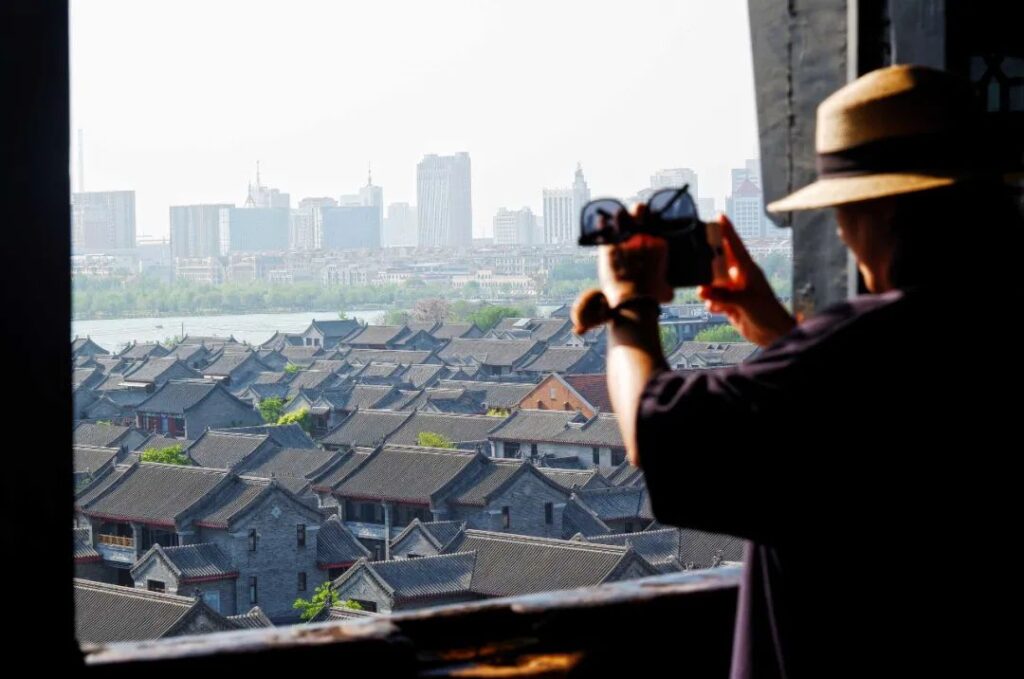
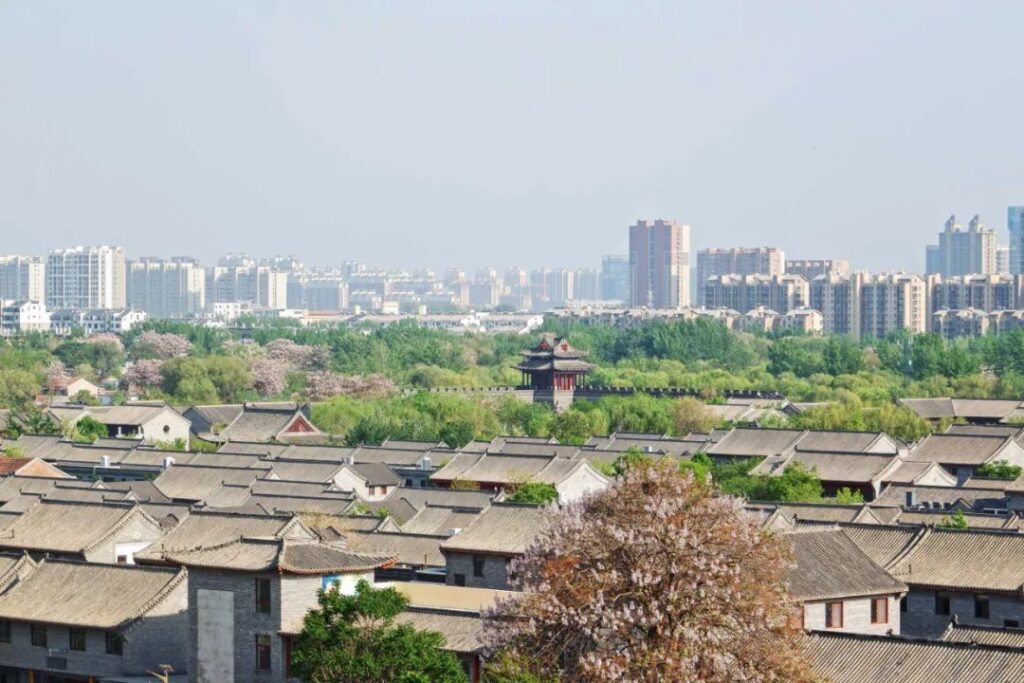
After leaving Guangyue Tower, it seems natural to take a stroll through the ancient city. To be honest, it’s quite commercialized, but I feel it hasn’t reached the point of being annoying. There are quite a few small museums in the city, so there are still places to visit.
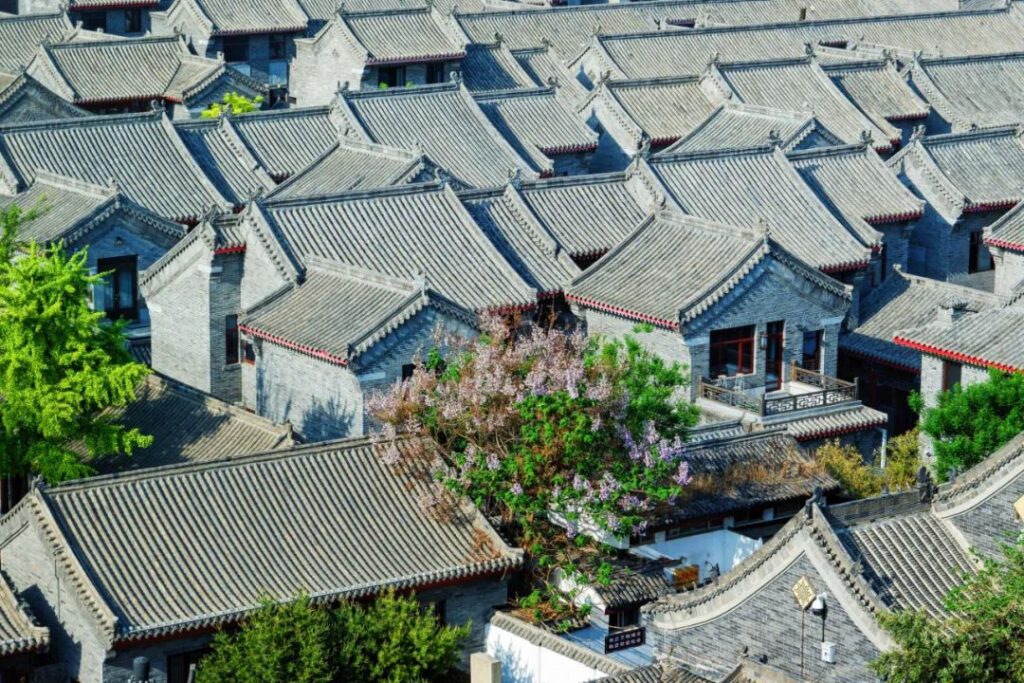
My personal favorite museum is the Ming and Qing Dynasty Imperial Edict Museum next to Guangyue Tower. Although it’s a private museum, it has a rich collection.
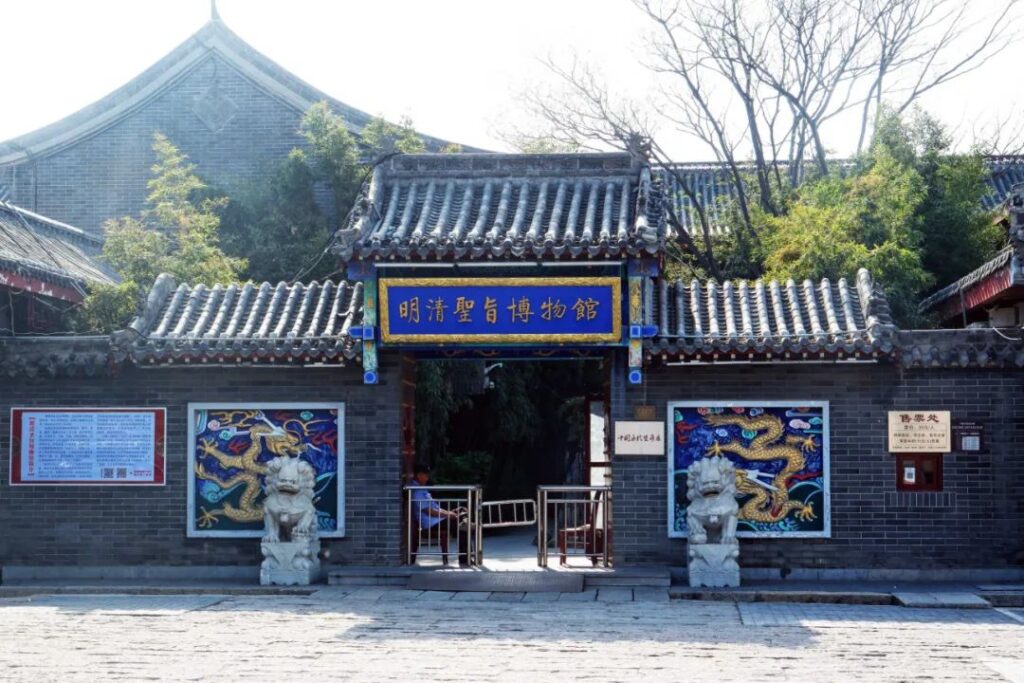
In the museum, you can see the imperial edicts and titles often heard in TV dramas. I learned that imperial edicts were not always yellow; there were even five-colored and seven-colored ones.
Seeing a minister write a long passage only for the emperor to add a brief comment of three characters, “Zhidaole” (Understood), suddenly brings you closer to the emperor.
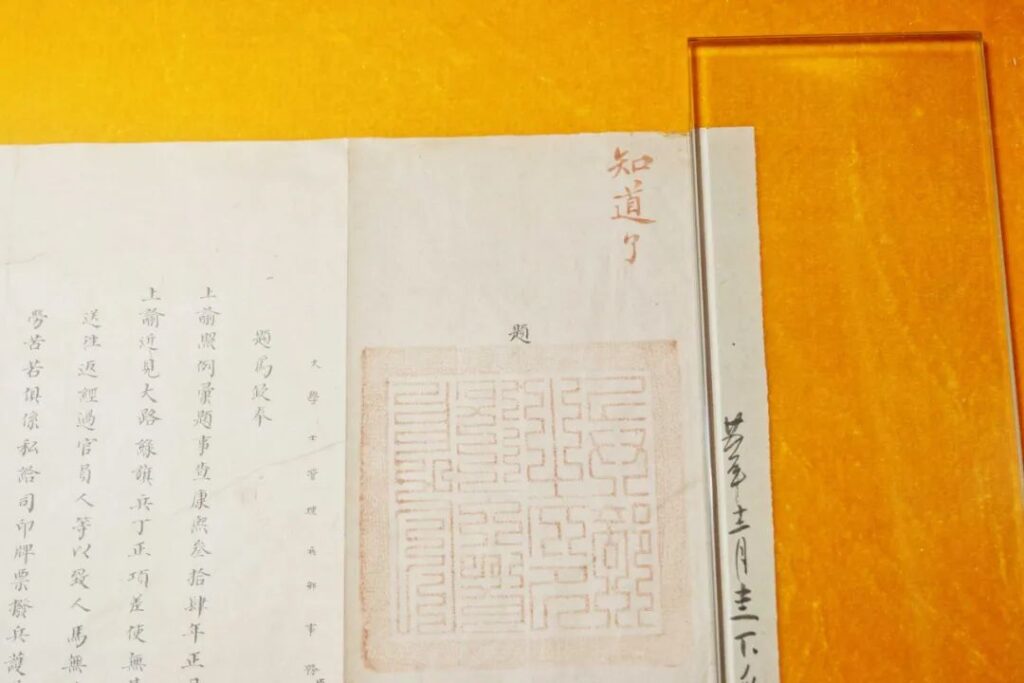
In addition to imperial edicts, you can also visit the exhibition of Chinese currencies throughout history. Seeing that even the fifth set of Renminbi has already entered the museum, I once again realized the cruel fact that I am not young anymore.
The ticket price is 30 yuan/person. Whether to spend this money or not is up to you.
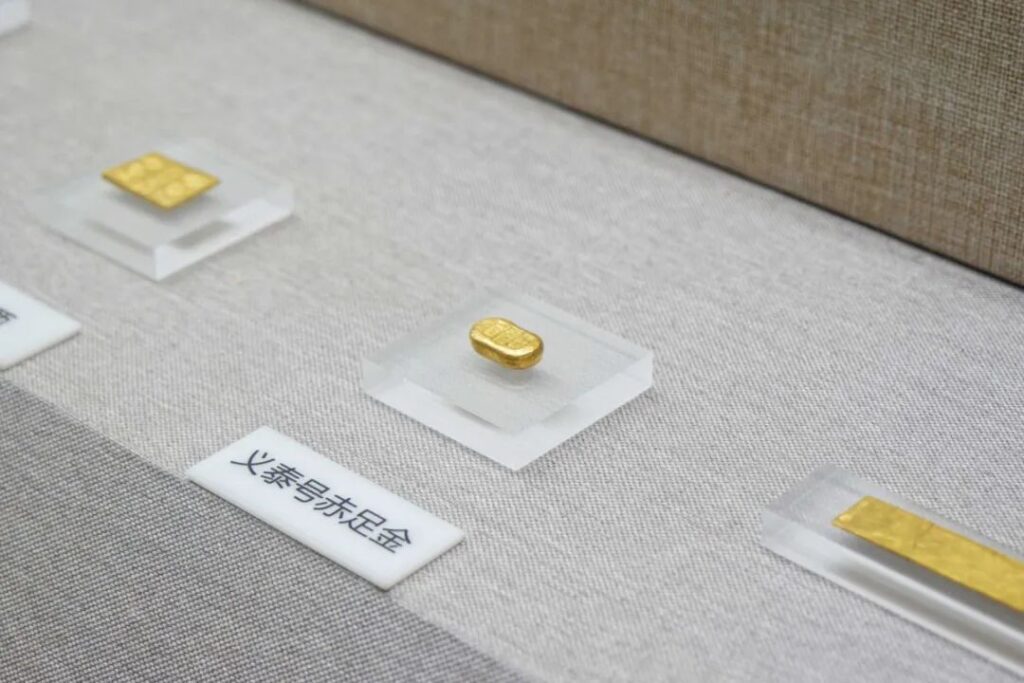
Iron Tower Cultural Museum
Tuesday to Sunday, 9:00-17:00, last entry at 16:30
Free entry with registration of identity information at the entrance
The Iron Tower is the oldest existing building in Liaocheng and one of the few iron and stone Buddhist pagoda buildings in China.
It was first cast layer by layer using cast iron to imitate wooden structures, and then assembled layer by layer. The carvings on the tower body are extremely delicate. Even the Sumeru pedestal at the bottom can be regarded as a masterpiece of Song Dynasty stone carving.
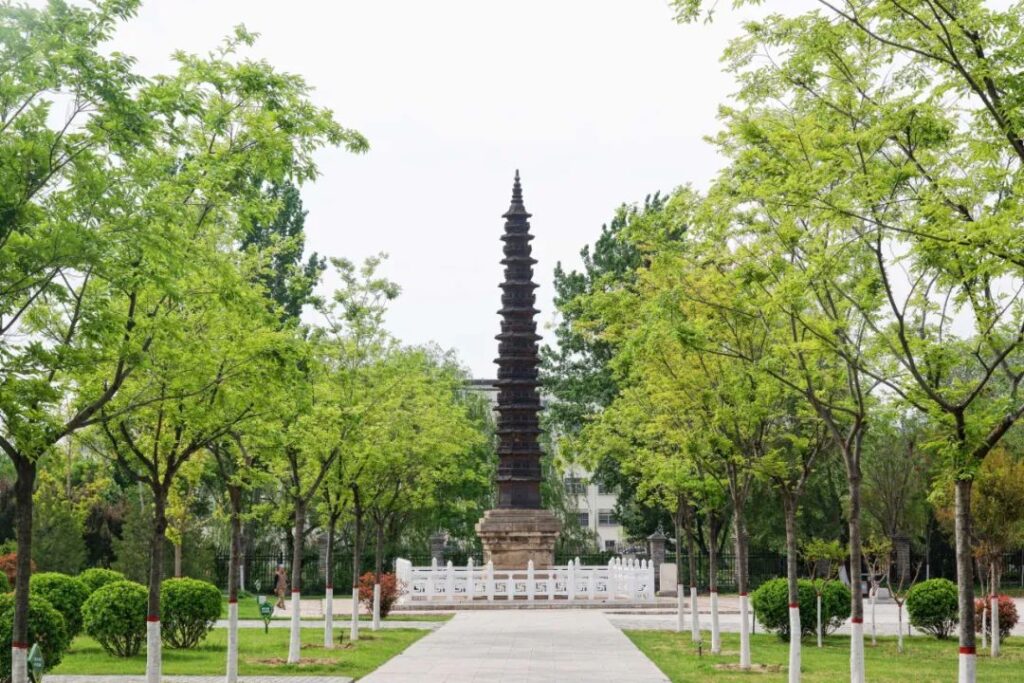
It is recommended to first visit the small museum next to it to understand the construction details and cultural significance of the Iron Tower. After that, you will have a deeper appreciation when viewing the Iron Tower itself.
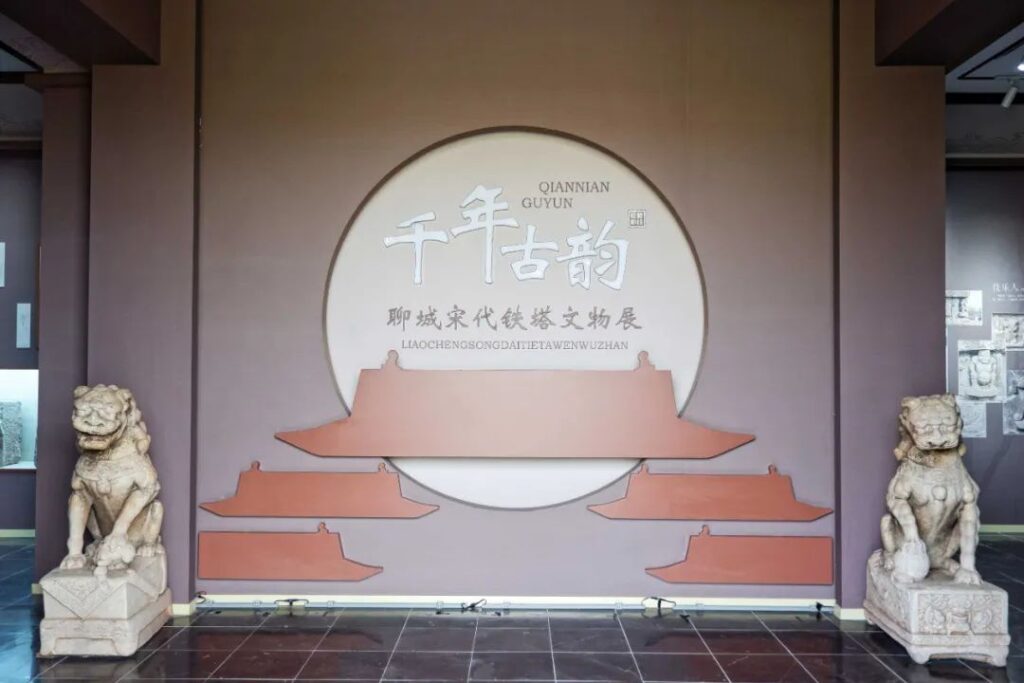
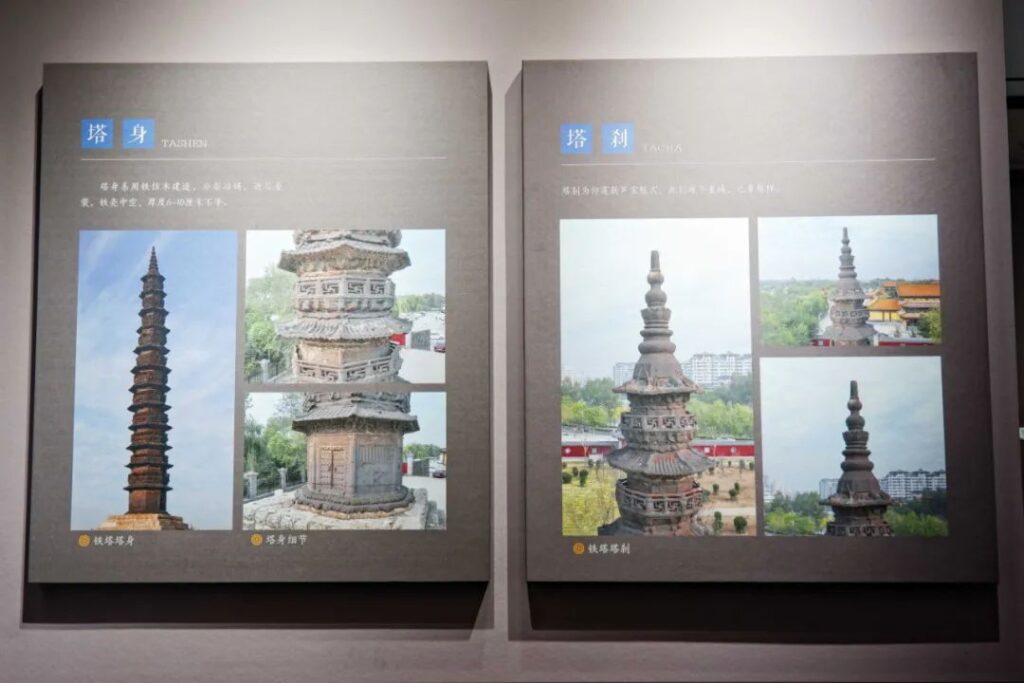
Longdi Wharf
If you want to find a place to watch the sunset over Dongchang Lake, I went to Longdi Wharf this time.
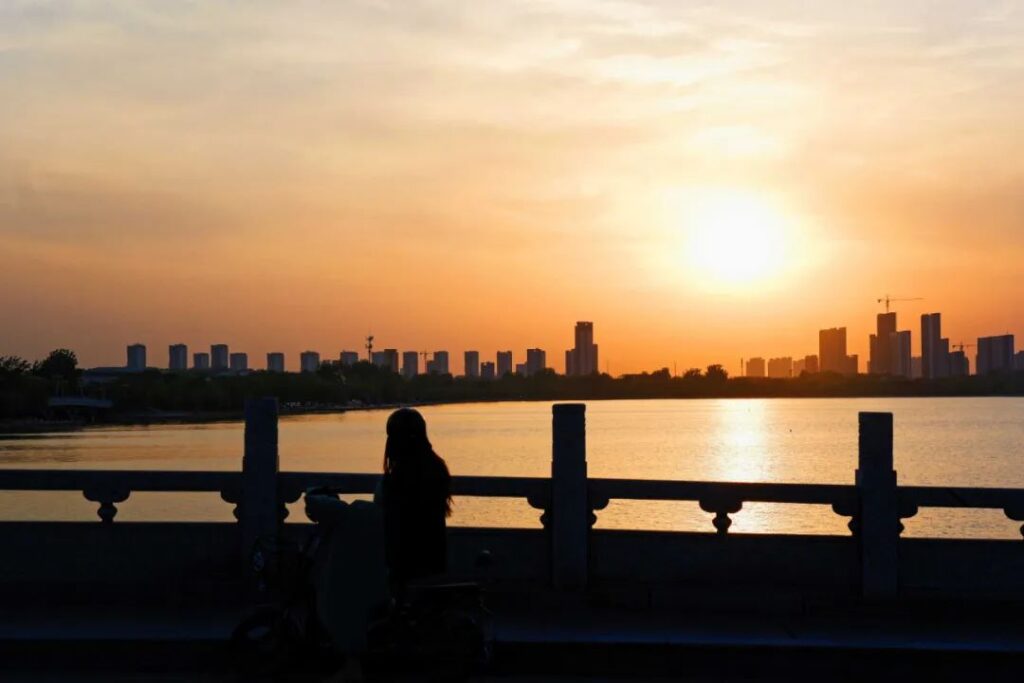
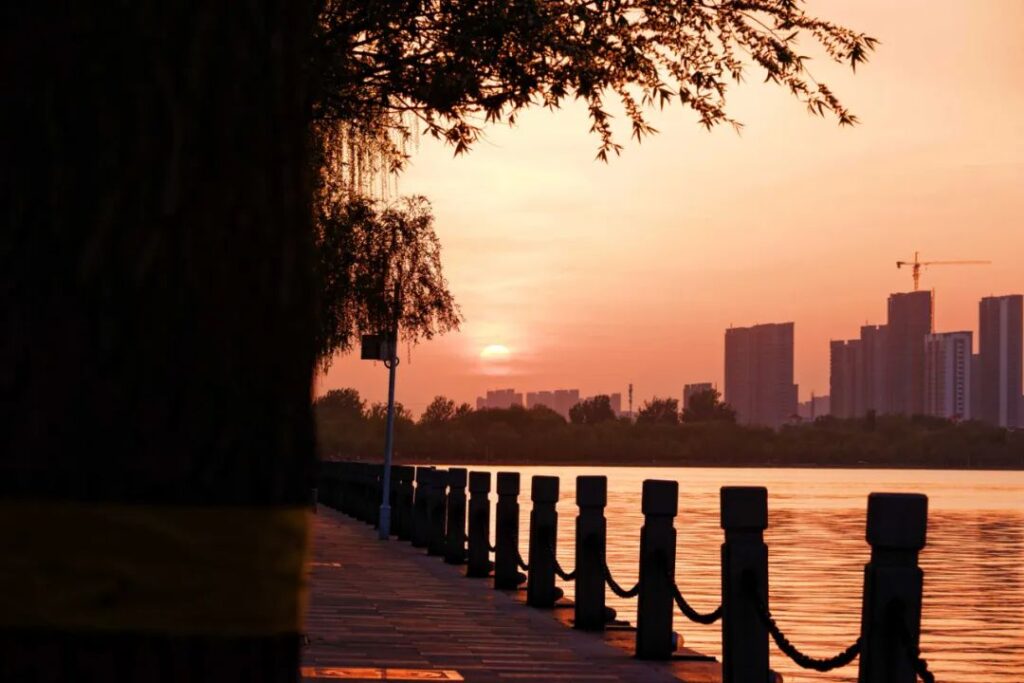
There is also a small Catholic church and a flock of white pigeons here.

You can rent a boat to tour the lake. The price list is shown here, and it seems more cost-effective with more people.
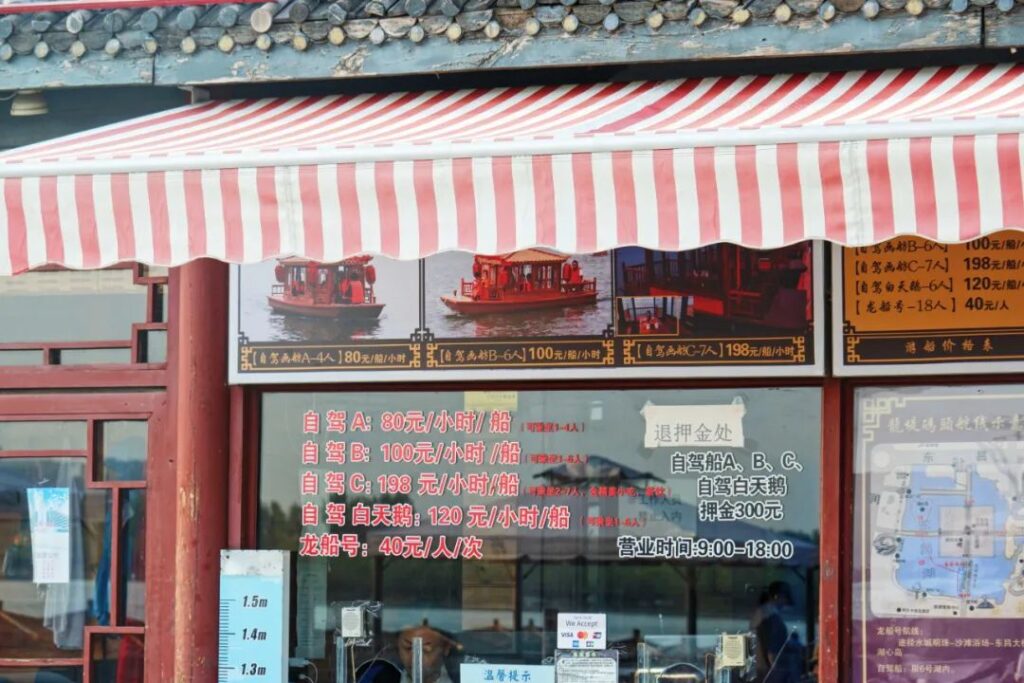
You can also walk to the Water City Eye Ferris Wheel, which is said to be one of the three largest Ferris wheels in Asia.
If you want to take the Ferris wheel to overlook Liaocheng, it is recommended to come at dusk to watch the sunset or at night to see the city’s night view. It’s too bright during the day, and the scenery is not as impressive.
Adult ticket: ¥50/person, one rotation takes about 20 minutes. You can search online in advance to see if there are any discount packages.
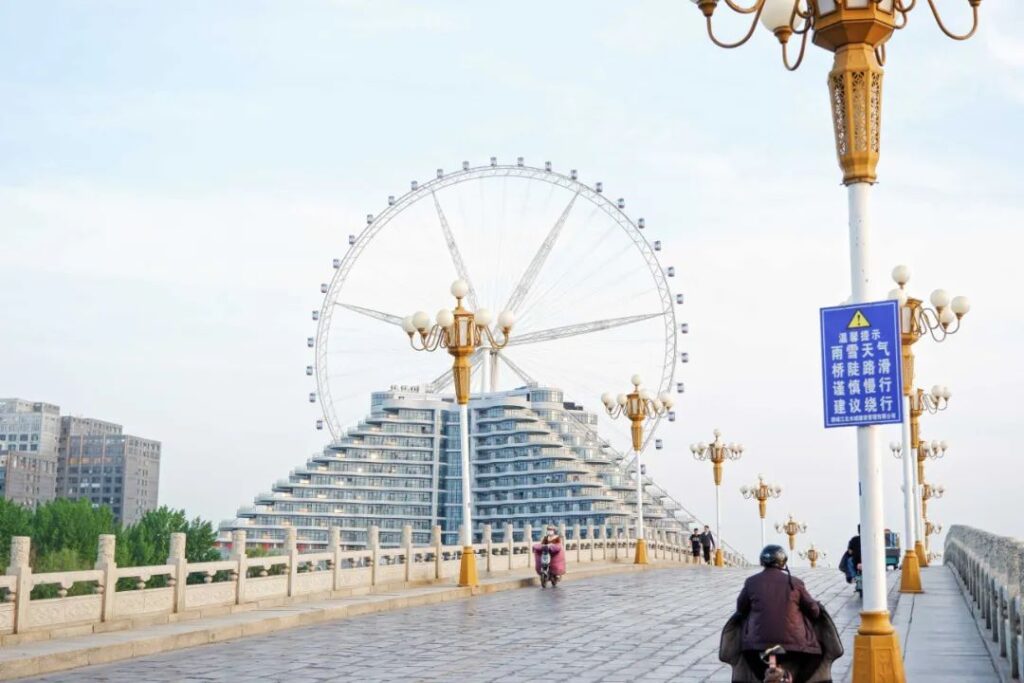
Liaocheng China Grand Canal Cultural Museum
Tuesday to Sunday, 9:00-17:00, last entry at 16:30
Free entry with ID card
To understand a city, you naturally have to visit a museum.
As the first specialized museum in China with the theme of Grand Canal culture, the Liaocheng Grand Canal Museum demonstrates its value with a sunken ship from the Yuan Dynasty in its main hall.
The first and second floors are temporary exhibition halls, while the third and fourth floors focus on displaying the historical changes of the Grand Canal, water engineering technology, management systems, and the prosperous towns that arose because of the canal.
Yuxin Street
This should be the most famous food street in Liaocheng. It’s the busiest during breakfast time.
Bapi guozi, diaolu shaobing, sanjiao huoshao, jidan hebao… Don’t bother making a plan; just head in when you see an interesting name. After all, Liaocheng is not a popular tourist city, and the main customers are the surrounding neighbors. Restaurants that aren’t good won’t be sustained by tourists.
Shazhen Yang’s Family Guada
When you come to Liaocheng for breakfast, you must try guada, which was created in the Qing Dynasty and has a history of 200 years.
The dough is rolled into long strips, spread with freshly mixed meat filling, rolled up, pinched at both ends, and then rolled into an oval-shaped dough. It’s then placed on a pan to start frying.
The outer layer is crispy and fragrant, while the inside pork is tender. It’s super satisfying to eat.
It’s recommended to try the guada with a mixture of meat and egg filling. When the guada is about 70% cooked, an opening is made on top, and egg liquid is poured in. The combination of meat and egg doubles the deliciousness. Because of its colorful appearance, it has also been given an extremely pleasant name, “Wind Stirring Snow”.
Pair it with a bowl of traditional tofu brain for 3 yuan, add braised water, sesame paste, garlic paste, and coriander. The taste is super unique.
It’s recommended to go during breakfast time. Although you may have to queue for a while, the guada will be freshly made. If you go near noon, they’ll basically all be pre-made and placed there, and the crust won’t be as crispy.

Yuxin Street Food Market
I discovered this food market by chance when passing by. The scale is super large.
Selling vegetables, fish, fruits… of course, there’s no shortage of cooked food. It’s suitable for a stroll after breakfast to aid digestion. Who knows, you might even have another meal after leaving the food market.
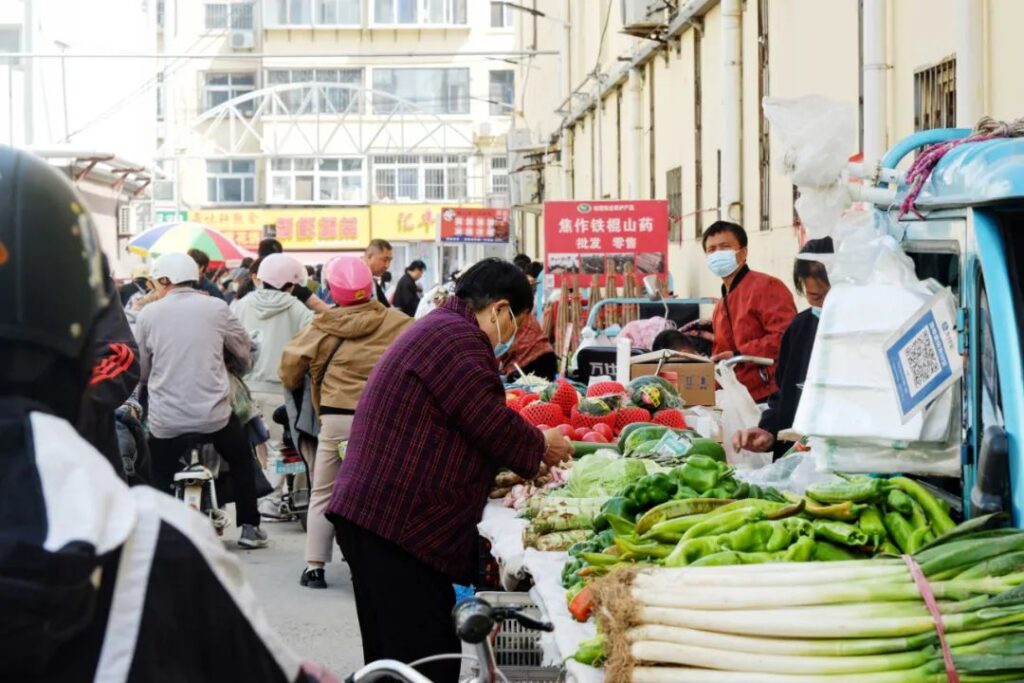

Dongguan Street
Dongguan Street, adjacent to the ancient city, is also a food street highly recognized by locals. Coming here in the morning also has a strong atmosphere of daily life. You can buy bapi guozi and diaolu shaobing at this store, and drink tofu brain at that store, all according to your preference.
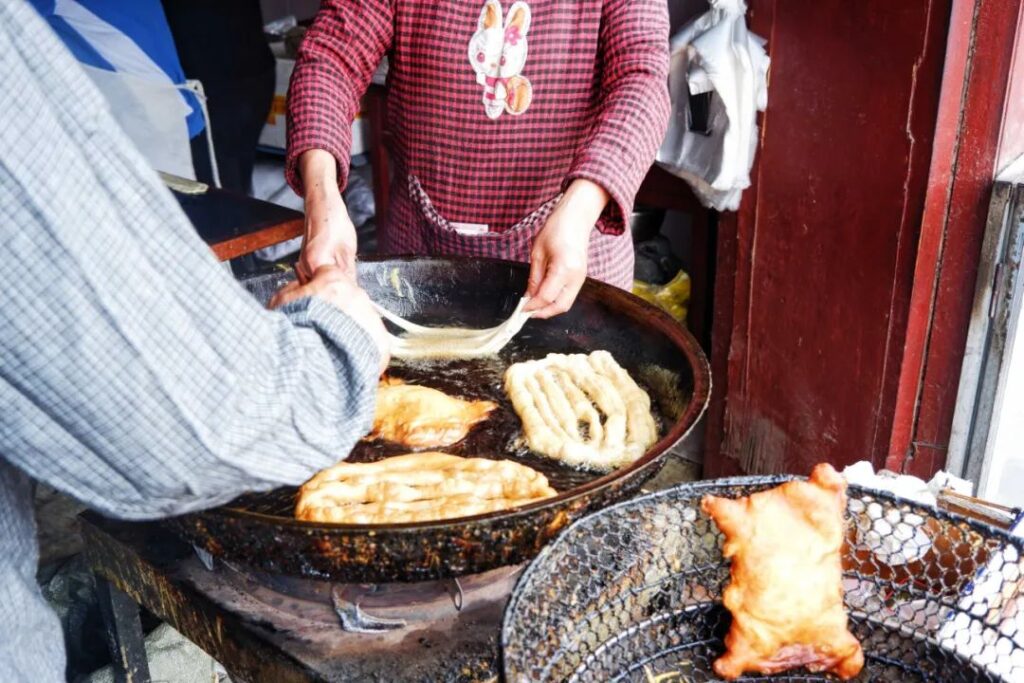
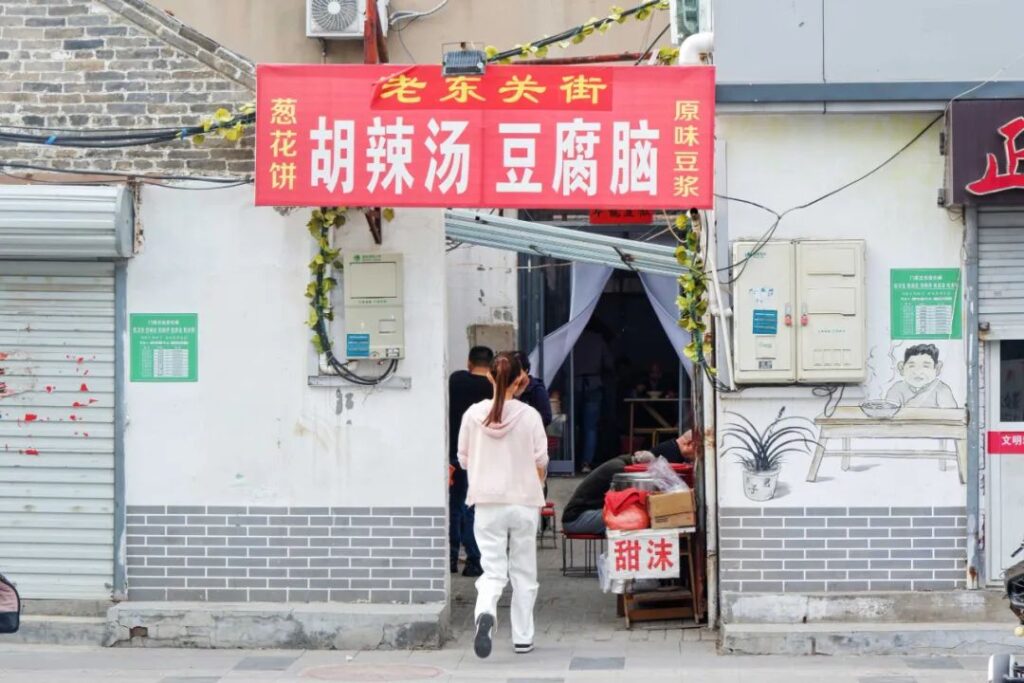
Because it’s a gathering place for Hui people, there are quite a few mutton restaurants on the street. Having a bowl of mutton soup here is also a good choice.
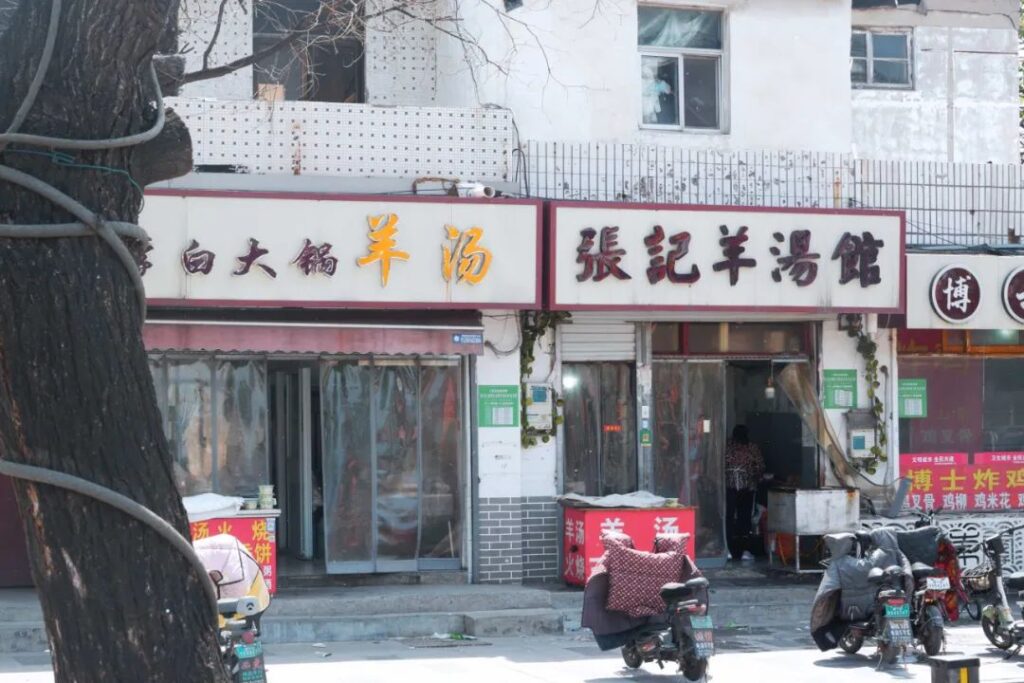
Halal Danhui Yishun Baozi Shop
A very popular store on the street. The open kitchen leaves no room for pre-made baozi.
There aren’t many types of baozi, but the ingredients are solid. The mutton baozi for three yuan has a super large meat filling.
If you find pure meat too greasy, there are also options with zucchini and mutton, leek and mutton, and eggplant and mutton fillings, all for only 3 yuan each.
It’s highly recommended to pair it with a bowl of soy milk. For 2 yuan, you get a full large bowl poured from a thermos, with a very strong soy fragrance.
There’s also the Fu Sinian Memorial Hall on Dongguan Street. You can visit for free by registering your identity information at the entrance. You can learn about the life of this famous historian here.

Rice Market Street
Walking from Dongguan Street towards the ancient city, you can see Rice Market Street at the end.

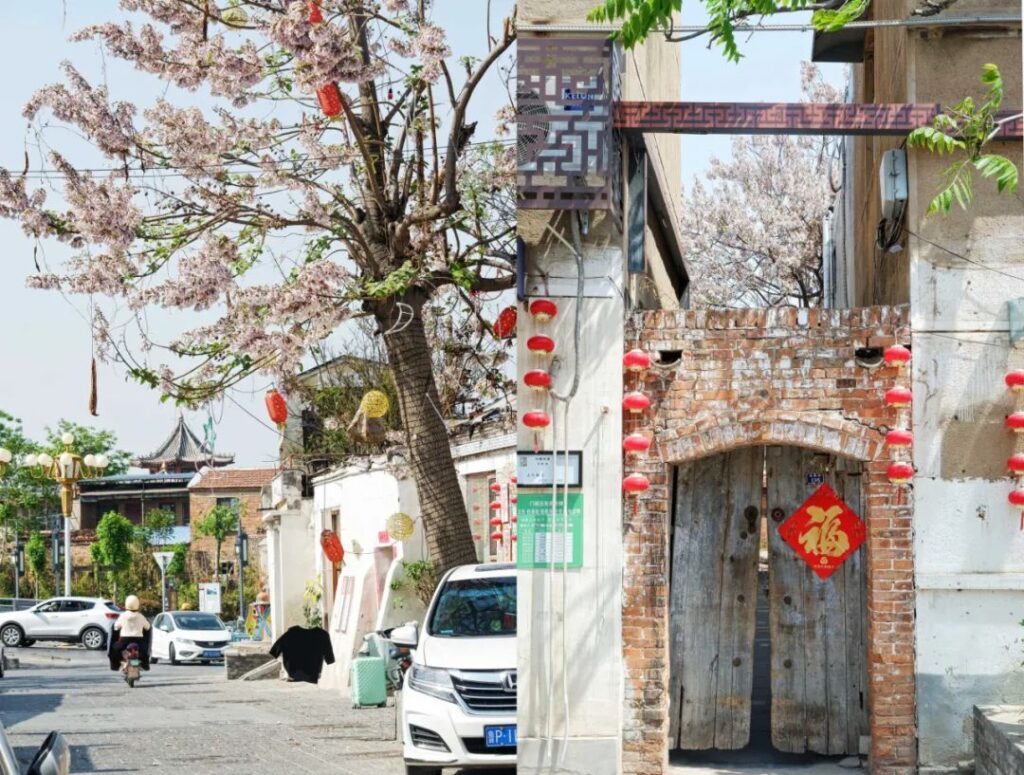
Although it’s only one kilometer from end to end, Rice Market Street is a witness to Liaocheng’s history.
In the Qing Dynasty, this was the main road connecting the canal wharf and the city. After the founding of New China, metallurgical factories, furniture factories, and shoe factories were built here.
Now, while preserving the old factory buildings, a group of young store owners with ideas have been recruited to open stores here.

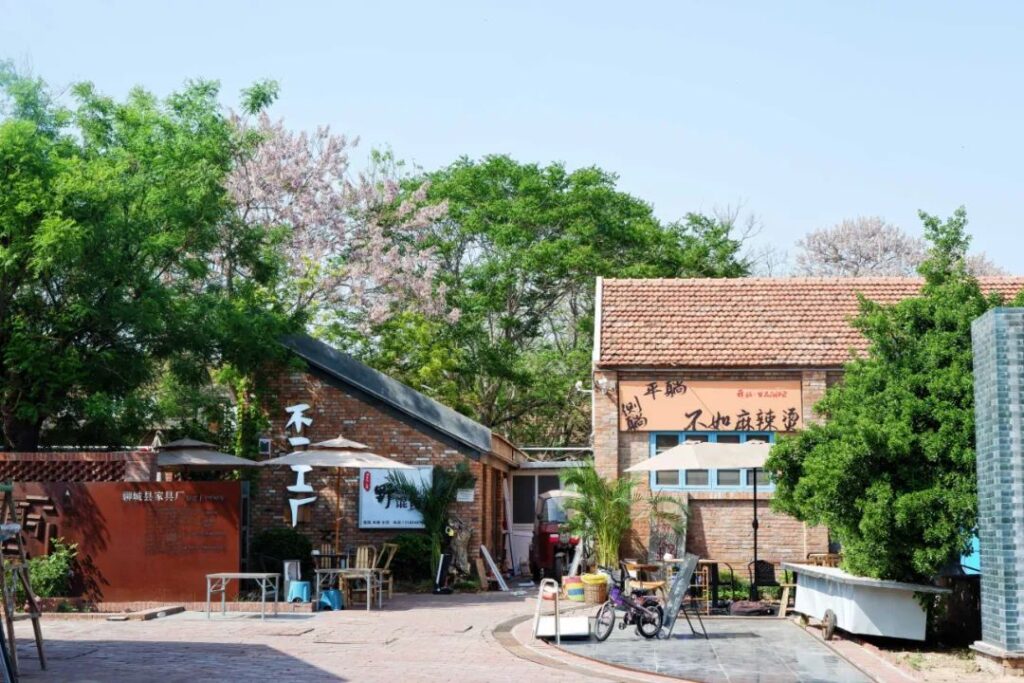
In short, if you want to find a place to sit after visiting the ancient city, you can come here, see the red brick walls and big chimneys, and spend time in a teahouse or handcraft workshop.
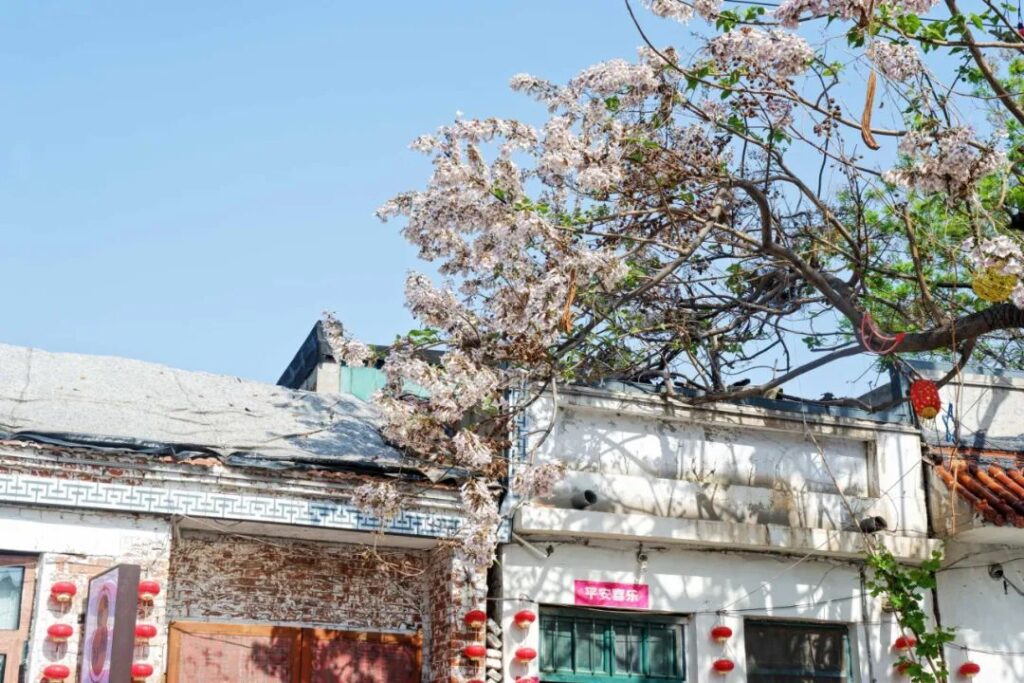
Facai Tangshui Shop Drinks & Desserts
⏰ 11:00-20:30
I was attracted by the building and went in to consume, and the taste was an unexpected surprise.
The store is not big but designed very cozily. You can come here to eat ice cream in the summer.
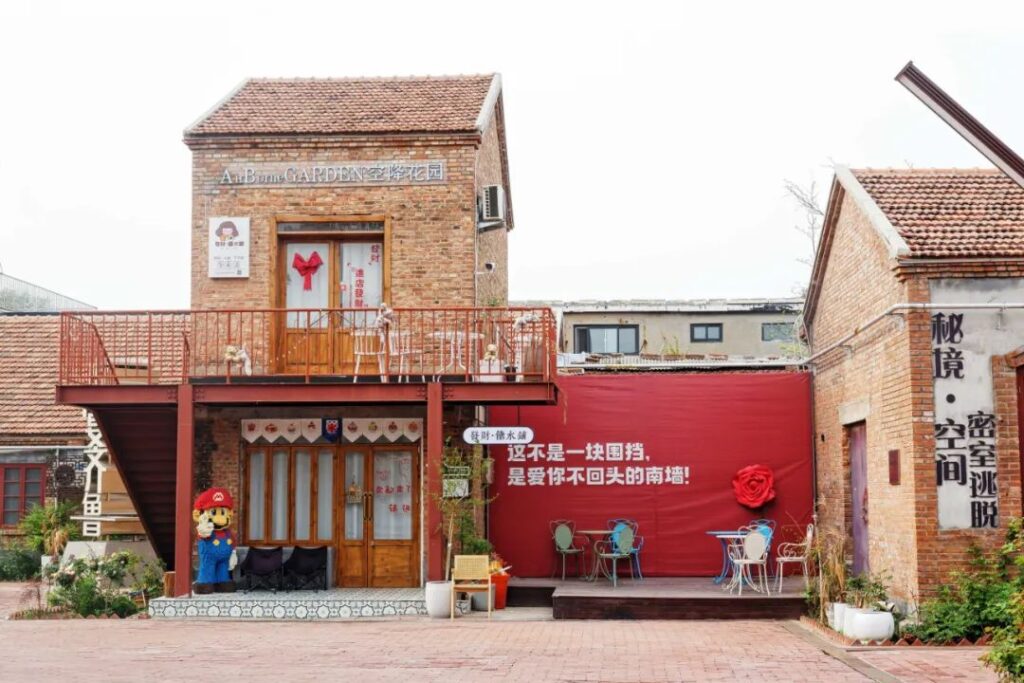

I heard from the taxi driver that the counties and cities under Liaocheng’s jurisdiction are actually quite amazing. Next time, I can go play in Linqing. Then it’s a deal with Liaocheng, see you next time!
Travel Tips
Accommodation: Accommodation within the ancient city is mostly homestays. If you want to stay in a hotel, you can stay around the ancient city, such as the Dongchang Lake area. Quanji is a good reference.
Transportation: Liaocheng West Station (high-speed rail station) is quite far from the urban area. It takes about 20 minutes by taxi to the Water Ancient City. There are also public buses outside the station that go directly to the city center.
Taking the high-speed rail to Liaocheng mostly requires a transfer in Jinan or Zhengzhou. Shareholders with ample time can string them together and play.




